We’ve all had clients walk through our doors asking how to get rid of brassy hair. Toner is usually our go-to solution, but there’s considerable confusion about its effects on hair health. Today, we’re diving deep into the science behind toner, addressing common misconceptions and exploring facts that every stylist should know.
So, does toner damage hair? Let’s find out!
Understanding Hair Toner
Before we tackle the myths and facts about toner damage, let’s establish what hair toner does. Toner is a demi-permanent product that alters hair color. It’s crucial in color correction, allowing stylists to neutralize unwanted warm tones and achieve desired cool shades. Depending on the desired outcome and specific product used, the formulation contains direct dyes or a combination of developer and oxidative dyes.
The Science Behind Toner and Hair Structure
Applying toner to a client’s hair initiates a chemical process that affects the hair’s cuticle layer. The molecules in toner penetrate the cuticle and deposit color particles within the hair shaft. This process naturally causes some degree of cuticle manipulation, but the extent of this interaction determines whether toner damages hair. The cuticle layer consists of overlapping scales that protect the inner cortex of the hair shaft. When we apply toner, these scales lift slightly to allow color penetration and then close again during neutralizing.
Now, let’s take a look at some common myths and facts surrounding toner and its use.
1. Myth: All Toners Contain Damaging Ammonia
One of the most persistent misconceptions in the beauty industry is that all toners rely on ammonia as their active ingredient. In reality, modern toner formulations often use gentler alkalizing agents. Many professional-grade toners now incorporate moisturizing components and salon quality conditioners bases that help maintain hair integrity during toning. These newer formulations achieve excellent results while minimizing potential damage.
2. Fact: The pH Level Matters More Than You Think
A toner’s potential for damage largely depends on its pH level. Most professional toners have a pH between 8 and 10, which is necessary to lift the cuticle for color deposit. However, this temporary cuticle lifting doesn’t equate to damage with proper product use. Understanding pH levels helps you choose the right product for all hair types and textures. For example, toners with lower pH levels are gentler on damaged or delicate hair while providing effective toning results.
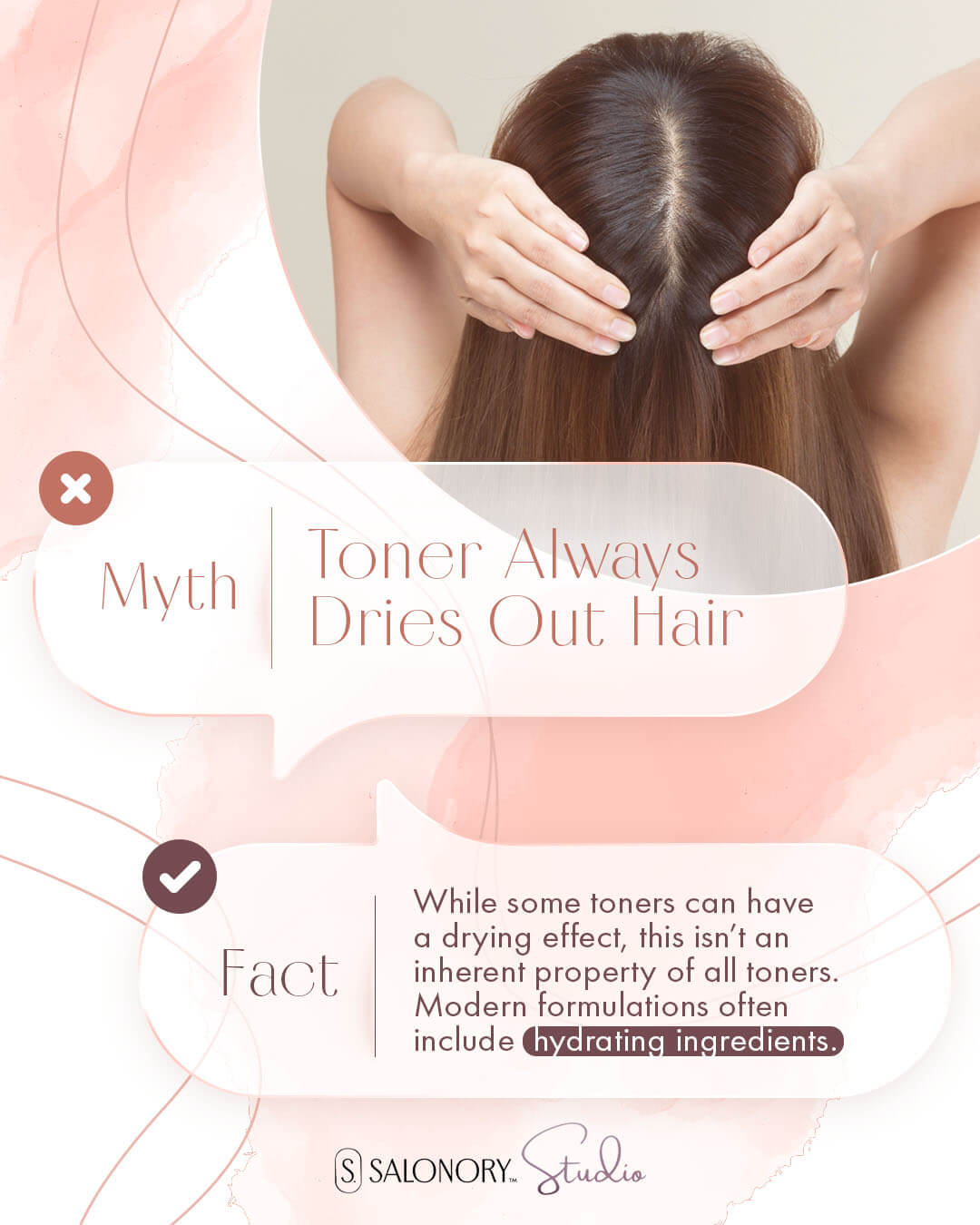
3. Myth: Toner Always Dries Out Hair
While it’s true that some toners can have a drying effect, this isn’t an inherent property of all toners. Modern formulations often include hydrating ingredients like glycerin, panthenol and various oils. The best way to prevent excessive dryness is by selecting an appropriate toner for each client.
4. Fact: Toning Is an Art
Properly toning hair is as much an art as a science. Understanding advanced color theory is essential when learning how to color correct hair. Understanding the color wheel and how different toners interact with underlying pigments helps stylists achieve optimal results with minimal processing time and, therefore, minimal damage.
5. Myth: You Can’t Use Toner on Damaged Hair
While caution is always necessary when working with compromised hair, declaring toner completely off-limits for damaged hair is overly simplistic. When combined with appropriate treatments, acid-based toners and those with lower volumes are often safe for damaged hair. Professional judgment in assessing hair condition and choosing appropriate products makes all the difference in achieving desired results while maintaining hair integrity.
6. Fact: Regular Toning Requires Extra Hair Care
Frequent toning sessions can impact hair health if not properly managed. This isn’t because toner is inherently damaging but because repeated chemical processes take a toll over time. As a professional stylist, it’s your responsibility to recommend products, treatments and techniques to maintain hair health between toning sessions.
7. Myth: Natural Toners Are Always Safer
“Natural” has become a buzzword in the beauty community, but it doesn’t necessarily make a toner safer or less damaging. Some natural ingredients are quite alkaline or astringent, potentially stressing delicate tresses more than properly formulated synthetic options. Focus on the product’s pH balance and overall formulation rather than whether it’s natural or synthetic. Understanding the chemical properties of natural and synthetic ingredients helps you make informed choices for your clients.
8. Fact: Porosity Plays a Crucial Role
Hair porosity influences how hair responds to toner, so understanding your client’s hair porosity helps you choose an appropriate toner strength and processing times. High-porosity hair absorbs toner more readily but may also be more susceptible to potential damage. Different processing techniques may be necessary for various porosities to achieve optimal results while minimizing potential damage.
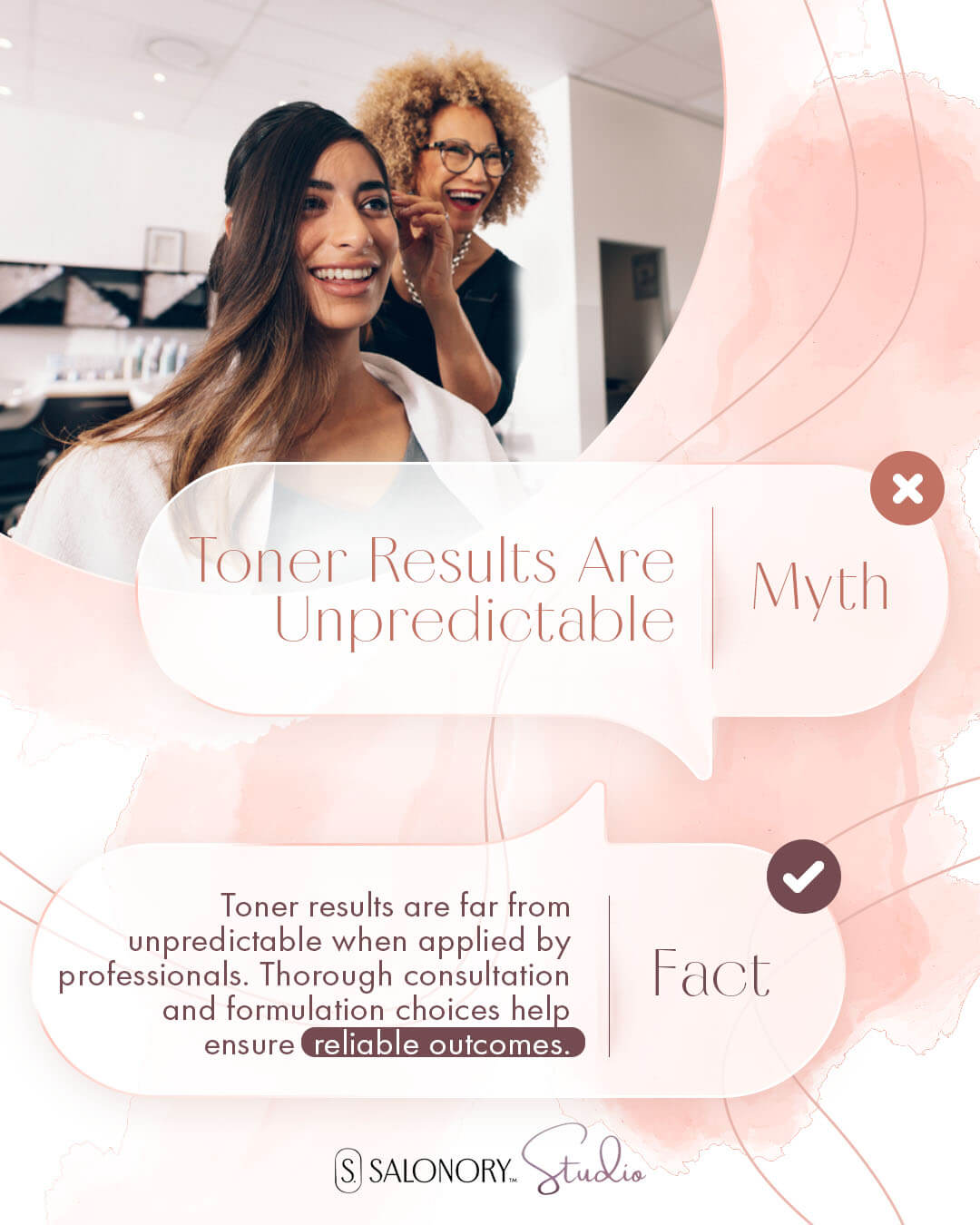
9. Myth: Toner Results Are Unpredictable
While toner results can vary, they’re far from unpredictable when applied by professionals. A thorough consultation and careful formulation choices help ensure reliable outcomes.
That brings us to the next fact:
10. Fact: Professional Application Matters
Even the gentlest toner can cause problems if misused. Proper sectioning, careful formulation, even application and close monitoring are essential skills that set professional results apart. Understanding how to adjust application techniques for various hair types and conditions also helps prevent potential damage. While many retailers offer at-home toner kits, this job is best left to the professionals.
11. Myth: High-Volume Developers Provide Better Results
More isn’t always better. Using a higher-volume developer with toner will not improve results but can increase the risk of damage. Most toners work effectively with a 10-volume developer, providing optimal color deposit without excessive lifting. When determining what developer to use for each client, consider multiple factors, including the desired outcome and hair condition.
12. Fact: Temperature Affects Toner Performance
Carefully controlled external heat can accelerate processing time, but excessive heat can damage the cuticle and cause uneven color deposits. Understanding the role of temperature in toning helps you achieve optimal results for your clients while minimizing potential damage. This includes knowing when to use or avoid heat and how to monitor processing when applying heat.
13. Myth: Toner Can Fix Any Color Problem
While toner is an invaluable tool for color correction, it’s not a miracle solution for every color issue. Sometimes, other color correction techniques are necessary. Use your professional judgment to determine when to use toner versus other color correction methods. Understanding the limitations of toning helps you make better decisions about color correction approaches.
14. Fact: Quality Matters
Not all hair care products are equal, and a toner’s quality significantly impacts its potential to damage hair. Professional-grade products contain safer ingredients, more precise formulation and clearer application guidelines than products one can buy at a drugstore or big box retailer. This is why maintaining professional standards in product selection is crucial. Recognizing the differences between professional and consumer-grade products and sticking with salon-quality toner is one of the best things you can do to protect your clients’ hair from damage.
15. Myth: All Hair Types Process Toner the Same Way
A common misconception among newer stylists is that toner processes identically across all hair types and textures. In reality, factors like texture, density and natural melanin content influence how hair responds to toner. Coarse hair typically requires different processing times than fine hair, while textured hair may need modified application techniques to ensure even coverage. Understanding these variations helps you avoid underprocessing as well as potential damage from overprocessing.
16. Fact: Bond Builders Can Enhance Toner Safety
Recent advances in hair chemistry have shown that incorporating bond-building treatments during toning can reduce potential damage. These revolutionary products work at the molecular level to protect and rebuild hair bonds during chemical services. Bond builders can help maintain hair integrity while achieving desired tonal results when properly integrated into toning services.
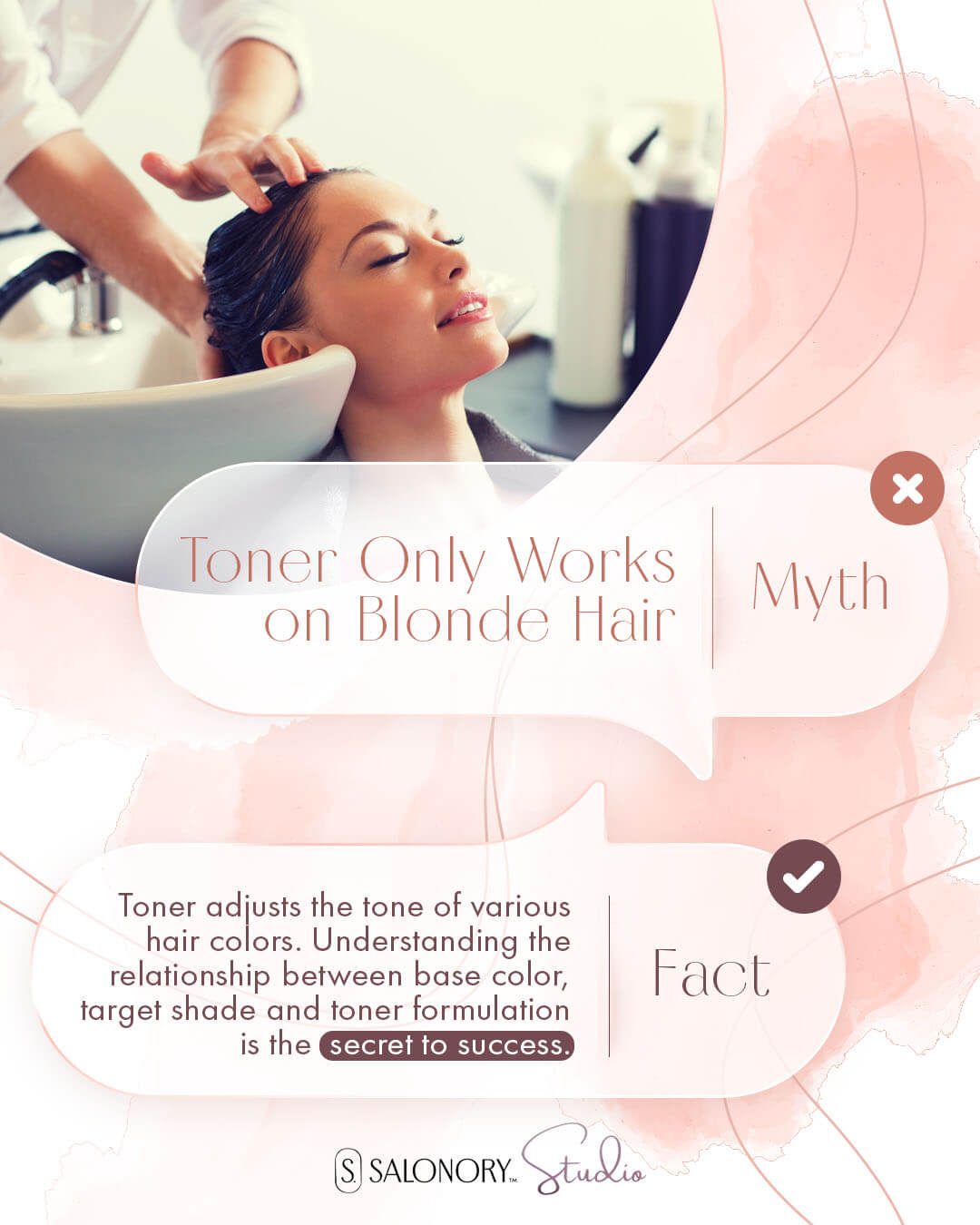
17. Myth: Toner Only Works on Blonde Hair
While toner is commonly associated with blonde hair services, blondes aren’t the only ones who can have more hair color fun with toner! When used properly, toner adjusts the tone of various hair colors. Understanding the relationship between base color, target shade and toner formulation is the secret to success when toning any hair color.
18. Fact: Previous Chemical Services Impact Toner Performance
A client’s hair history directly affects how toner will perform and its potential to cause damage. Hair that has undergone multiple chemical services requires different handling than virgin hair. Encourage your clients to be truthful about their hair history to help you adjust formulations and processing times to prevent unnecessary stress on their hair while achieving their desired results.
19. Myth: All Protein Treatments Help with Toner Processing
While protein treatments can be beneficial, assuming all protein treatments improve toner processing is incorrect. Some protein treatments can create barriers affecting toner absorption, potentially leading to uneven results or requiring stronger processing solutions that could damage hair. The type and timing of protein treatments should be strategically planned around toning services.
20. Fact: Water Quality Affects Toner Results and Damage Potential
The mineral content and pH of water used in the toning process can affect color results and potentially cause damage. Hard water, in particular, interferes with processing and contributes to premature color fading. Understanding local water quality and using appropriate treatments or filters when necessary helps you achieve better results while protecting hair health.
21. Myth: Once Hair Is Toned, You Can’t Tone It Again Immediately
While it’s generally best to wait between toning services, there’s a misconception that hair can never be toned again immediately if needed. With proper professional judgment and appropriate products, you can perform same-day toner adjustments when necessary. Just be mindful of the hair’s condition and remember to use gentle formulations.
22. Fact: Scalp Health Influences Toner Safety
A healthy scalp is the foundation of healthy hair, so it makes sense that its condition affects toner application. If your client is experiencing scalp sensitivity, irritation or certain skin conditions, you may need to modify your application technique or product selection to ensure their comfort and safety.
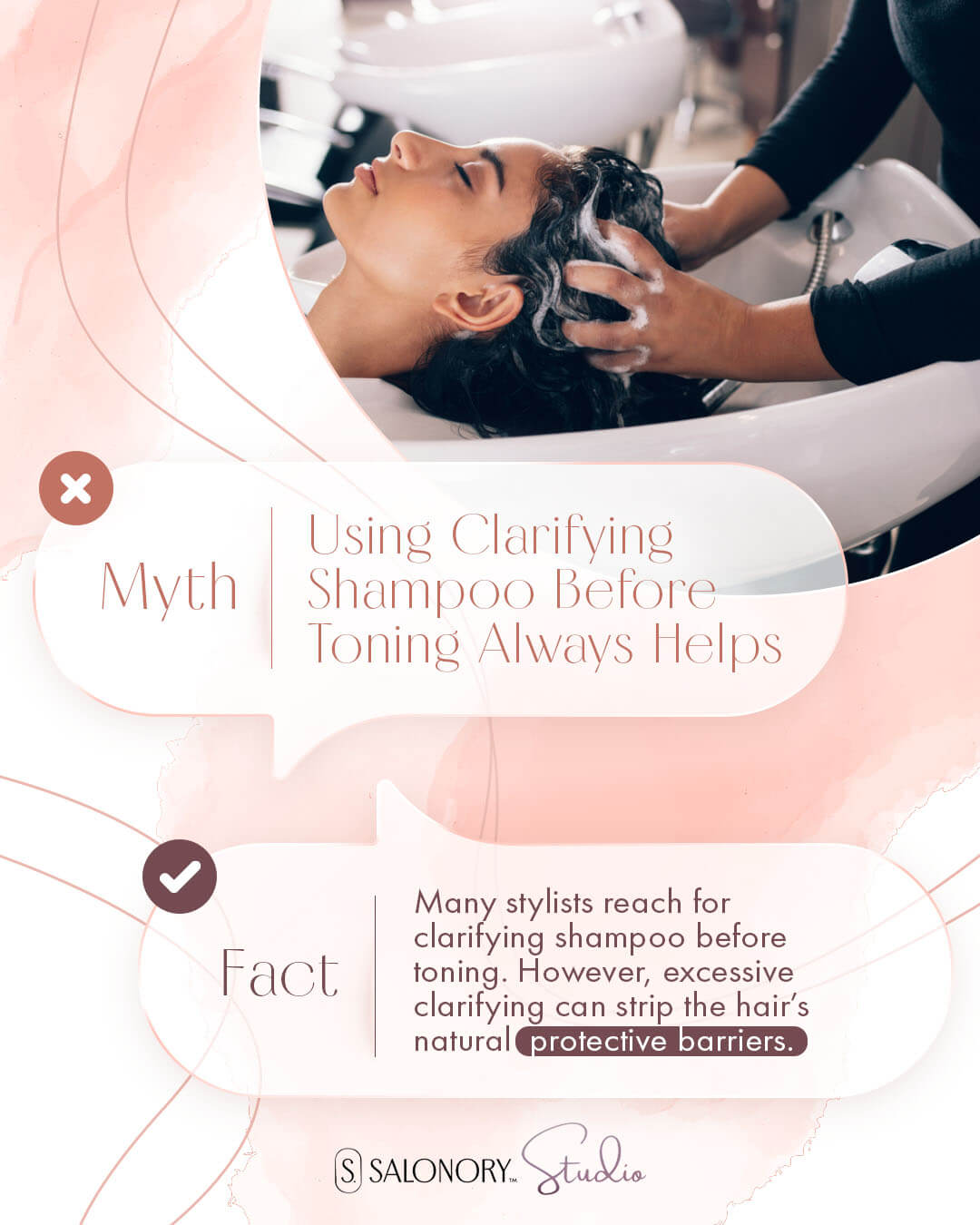
23. Myth: Using Clarifying Shampoo Before Toning Always Helps
Many stylists automatically reach for clarifying shampoo before toning, believing it creates a better canvas. However, excessive clarifying can strip the hair’s natural protective barriers, potentially increasing susceptibility to damage during toning.
24. Fact: Hair Elasticity Indicates Toning Safety
The elasticity of a client’s hair provides valuable information about its ability to withstand toning processes safely. Hair with good elasticity typically maintains better integrity during chemical services. Regular elasticity testing helps determine appropriate toner strength and processing methods while minimizing the risk of damage.
25. Myth: Color-Safe Equals Toner-Safe
Color-safe products aren’t automatically ideal for toned hair. Some color-safe products contain ingredients that could interact negatively with certain toner molecules, potentially causing premature fading or subtle damage over time.
Closing Thoughts
Does toner damage hair? There’s no simple answer.
When properly selected and professionally applied, toner is a safe and effective tool in your color arsenal. The secret to successful, damage-free toning is understanding the science, choosing quality products and maintaining proper technique.
Your role as a professional stylist is to leverage your knowledge and expertise to achieve beautiful results while protecting your clients’ hair health. Staying informed about the latest developments in toner technology and maintaining high standards in your application techniques allow you to create stunning transformations safely and effectively.
Successful toning encompasses more than achieving the desired color. It involves carefully maintaining hair health and integrity while meeting your clients’ color goals. Through proper education, technique and product selection, you can ensure that toning remains a valuable service in your professional toolkit without compromising your clients’ hair health.
Image Credits
Foxelle Art/Shutterstock.com
KeepMakingArt/Shutterstock.com
Hasan Sumon/Shutterstock.com
kei907/Shutterstock.com
Jacob Lund/Shutterstock.com
Ground Picture/Shutterstock.com








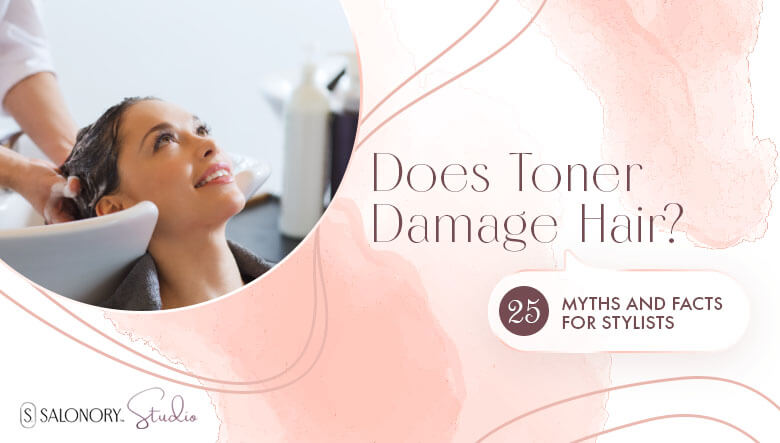


Share Your Feedback